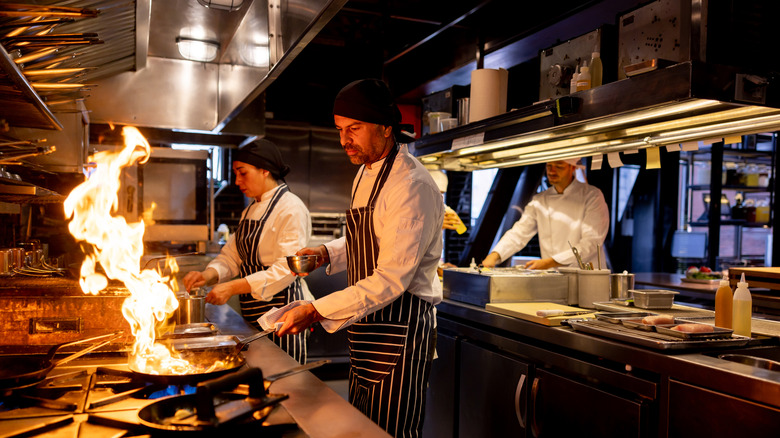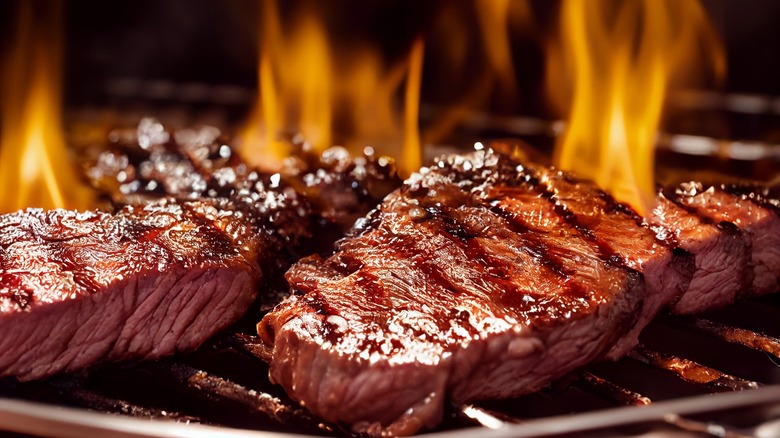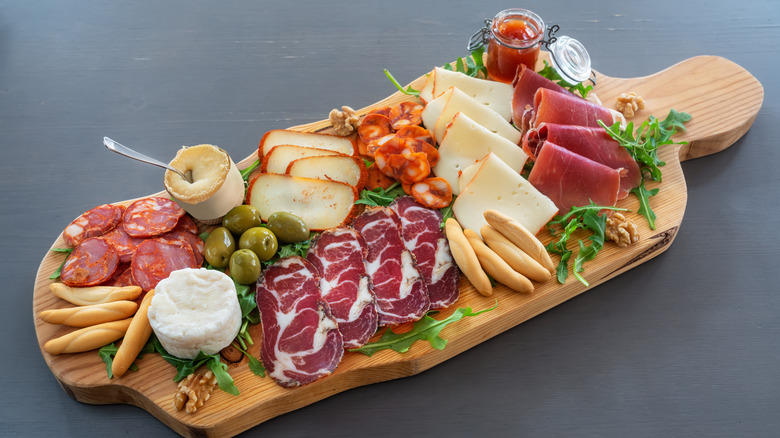You're Wrong About How Hot Restaurant Food Should Be
There's an excellent reason many foods are cooked to piping-hot temperatures: safety. There's a recommended minimum temperature associated with all meats and seafood so that we can be sure no harmful bacteria are remaining. Chicken, for example — according to the Food Safety and Inspection Service of the U.S. Department of Agriculture — should be cooked to an internal temperature of at least 165 degrees Fahrenheit. Steak, in comparison, should be brought to at least 145 degrees.
Cooking food at these elevated temperatures is one thing. However, eating it at them is another. As science has shown, taste can be enhanced or compromised depending on the temperature at which food is served. A 2007 study published in the journal Cellular and Molecular Life Sciences addressed this issue, noting that our ability to taste is diminished when foods are served above 95 degrees Fahrenheit. Yes, certain flavors – sweet and bitter, notably — may be intensified above this temperature line, but we begin losing the ability to detect sour or salty ones and to appreciate the harmony of flavors.
What this research is telling us, in other words, is that we're eating food at the wrong temperatures. This is particularly evident in restaurant settings, where because of food safety guidelines, hot food is only served to us at temperatures where we cannot properly appreciate it.
The optimal temperatures to appreciate the taste of food
Our tasting capacity is extraordinarily sophisticated. Each of us is blessed with about 10,000 taste buds and 450 smell receptors. Both senses, smell and taste, contribute to our ability to enjoy food, but it turns out certain electrical signaling pathways must also be activated for us to experience flavor fully. In fact, in a 2018 study published in the Proceedings of the National Academy of Sciences, it was shown via testing on mice that if the two most important taste signaling channels — called TRPM4 and TRPM5 — were blocked, these animals were completely unable to discern sweet, bitter, or umami flavors.
These two critical taste pathways are also affected by temperature, with the best results in terms of electrical current signaling to our brains associated with foods whose temperatures range from 59 to 95 degrees Fahrenheit. Above that range, as noted, our ability to taste begins to diminish.
Of course, when we're served food in restaurants, it's seldom if ever within this optimal tasting range. That's because food safety guidelines recommend hot food be served above 135 degrees, and cold food at less than 40 degrees. Anything between these two temperature extremes is considered to be dangerous for the growth of potentially harmful foodborne bacteria.
Is there a happy medium for safety and taste?
Restaurants are not going to ignore safety guidelines regarding the proper temperature for cooking meats or seafood. Nor should they. It's not worth a case of salmonella for a customer to fully appreciate the taste of grilled chicken or steak. It bears noting that typical restaurant serving temperatures do have benefits that we can appreciate relative to taste, and no, we're not just referring to an enhanced ability to enjoy sweetness. Texture impacts flavor, too, and many foods do have a better texture at hotter temps. Saturated fat, for instance, a key contributor to texture, should ideally be melted or liquefied in the case of most meats.
But some foods can be appreciated at their optimal temperature. Chocolate, for example, can safely be served at room temperature, even in a restaurant setting. You won't want to leave these items at room temperature for too long, of course, but an hour or two outside the refrigerator still falls within the Food and Drug Administration guidelines. Charcuterie board favorites like cured meat and cheeses can also be enjoyed at room temperature, as can dips like guacamole or salsa, and bread and pastries.



